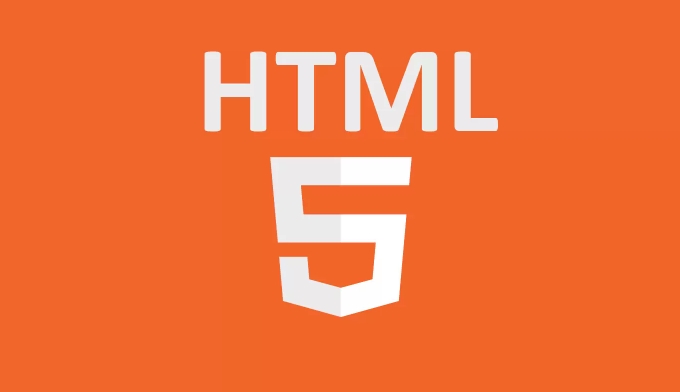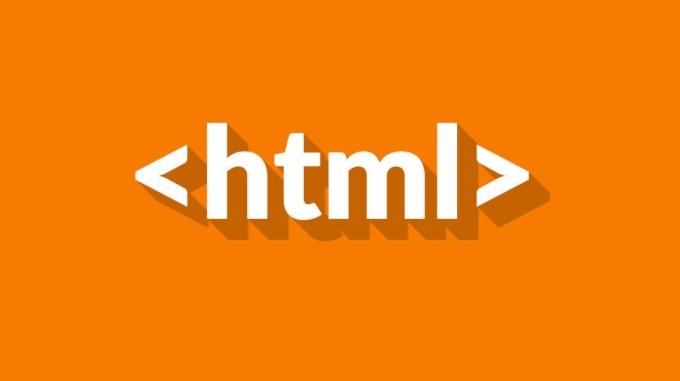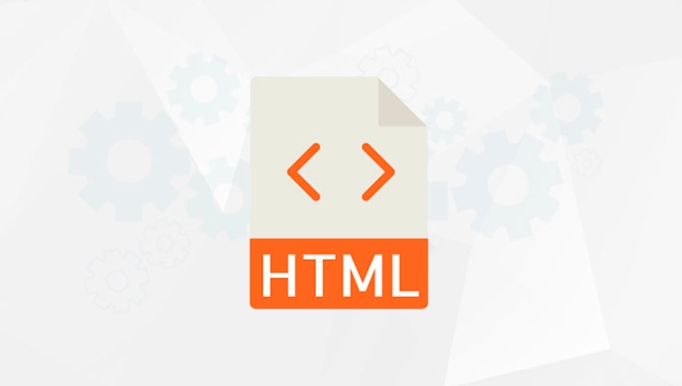The core difference between div and span is the default layout behavior and purpose. 1. A div is a block-level element, which occupies a single line and supports the width by default, which is suitable for building independent blocks such as page structure; a span is an inline element, which occupies only the required width of the content by default, which is suitable for wrapping text or small paragraphs of text in the line. 2. In use scenarios, div is used to group large segments of content and layout containers, while span is used to modify words or phrases in sentences. 3. The default behavior of both can be changed through the display attribute of CSS, such as turning the div into an inline element or setting the span as a block-level element, but the appropriate label should be selected based on the default characteristics to reduce additional style adjustments.

A div and a span are both basic HTML elements used to group content, but they behave differently by default and are meant for different purposes.

1. Block-level vs Inline: The Main Difference
The biggest difference between them is how browsers treat them by default:
- A
<div> is a <strong>block-level</strong> element. That means it takes up the full width available and starts on a new line.<li> A <code><span></span>is an inline element. It only takes up as much width as needed and flows with surrounding text and inline elements.
For example:

<div>This is a div block</div> <span>This is inline span text</span>
If you put two div s one after another, each will appear on its own line. But two span s would sit side by side unless there's not enough space.
2. When to Use Div vs Span
Use these elements based on what you're trying to build or style:

Use
<div>when:- You're grouping larger sections of content (like headers, footers, or layout blocks).
- You need a container that naturally breaks the flow (starts on a new line).
- You're building layout structures like cards, sections, or containers.
Use
<span>when:- You're wrapping small bits of text or inline elements inside a paragraph or sentence.
- You want to style part of a line without breaking the flow.
- You're targeting something like a word inside a heading or a special character in a sentence.
Example:
<p>This is a normal <span style="max-width:90%">word</span> inside a sentence.</p>
Here, using a span keeps the red-colored word inline with the rest of the text.
3. Can They Be Changed?
Yes — you can change how div and span behave using CSS.
You can make a div act like an inline element by setting:
display: inline;
Or make a span take up a full block:
display: block;
So while their defaults different, you're not locked into those behaviors. Just remember: use the right one by default unless you have a reason to change it.
That's basically it — div for blocks, span for inline bits. Doesn't sound like much, but mixing them up can lead to extra CSS just to "fix" layout quirks.
The above is the detailed content of What is the difference between a div and a span?. For more information, please follow other related articles on the PHP Chinese website!

Hot AI Tools

Undress AI Tool
Undress images for free

Undresser.AI Undress
AI-powered app for creating realistic nude photos

AI Clothes Remover
Online AI tool for removing clothes from photos.

Clothoff.io
AI clothes remover

Video Face Swap
Swap faces in any video effortlessly with our completely free AI face swap tool!

Hot Article

Hot Tools

Notepad++7.3.1
Easy-to-use and free code editor

SublimeText3 Chinese version
Chinese version, very easy to use

Zend Studio 13.0.1
Powerful PHP integrated development environment

Dreamweaver CS6
Visual web development tools

SublimeText3 Mac version
God-level code editing software (SublimeText3)

Hot Topics
 What is the role of (formerly PortalVue) in Vue 3 for rendering content outside the current component's DOM hierarchy?
Jun 11, 2025 am 12:09 AM
What is the role of (formerly PortalVue) in Vue 3 for rendering content outside the current component's DOM hierarchy?
Jun 11, 2025 am 12:09 AM
Vue3 is used to render content outside the current component DOM structure. 1. It allows you to move elements such as modal boxes, prompt tools to other locations on the page to solve layout problems, z-index hierarchy and accessibility problems; 2. When using it, you need to wrap the target content and specify the target selector, such as; 3. Vue will physically move the corresponding DOM node to the specified position while maintaining responsiveness and event logic; 4. Common application scenarios include modal boxes, notification messages, tooltips and barrier-free content; 5. When using it, you need to ensure that the target element already exists, and pay attention to the style scope and dynamic logic processing. In short, maintaining the logical relationship of component tree through virtual references provides a concise solution for complex UIs.
 What are some strategies for managing CSS and styling at scale in a large Vue project?
Jun 10, 2025 am 12:10 AM
What are some strategies for managing CSS and styling at scale in a large Vue project?
Jun 10, 2025 am 12:10 AM
TomanageCSSandstylinginlargeVueprojectseffectively,adoptscopedstylesbydefault,establishaglobalCSSarchitecture,useconsistentnamingconventions,selectivelyleverageCSS-in-JSorutilitylibraries,enforceconsistencywithlinters,anddocumentdesigntokens.Beginwit
 How can CSS be used to implement dark mode theming on a website?
Jun 19, 2025 am 12:51 AM
How can CSS be used to implement dark mode theming on a website?
Jun 19, 2025 am 12:51 AM
ToimplementdarkmodeinCSSeffectively,useCSSvariablesforthemecolors,detectsystempreferenceswithprefers-color-scheme,addamanualtogglebutton,andhandleimagesandbackgroundsthoughtfully.1.DefineCSSvariablesforlightanddarkthemestomanagecolorsefficiently.2.Us
 What are some common techniques for vertically centering content using CSS?
Jun 12, 2025 am 10:27 AM
What are some common techniques for vertically centering content using CSS?
Jun 12, 2025 am 10:27 AM
Vertical centering content can be implemented in CSS in a variety of ways, the most direct way is to use Flexbox. 1. Use Flexbox: By setting the container to display:flex and in conjunction with align-items:center, vertical centering of child elements can be easily achieved; 2. Combination of absolute positioning and transform: suitable for absolute positioning elements, by setting top and left to 50% and then using translate (-50%,-50%) to achieve centering; 3. CSSGrid: Through display:grid and place-items:center, horizontal and vertical centering can be achieved at the same time. If only vertical centering is required, use align
 Can you explain the difference between em, rem, px, and viewport units (vh, vw)?
Jun 19, 2025 am 12:51 AM
Can you explain the difference between em, rem, px, and viewport units (vh, vw)?
Jun 19, 2025 am 12:51 AM
The topic differencebetweenem, Rem, PX, andViewportunits (VH, VW) LiesintheirreFerencepoint: PXISFixedandbasedonpixelvalues, emissrelative EtothefontsizeFheelementoritsparent, Remisrelelatotherootfontsize, AndVH/VwarebaseDontheviewporttimensions.1.PXoffersprecis
 How does in Vue 3 help manage asynchronous components and their loading states?
Jun 10, 2025 am 12:07 AM
How does in Vue 3 help manage asynchronous components and their loading states?
Jun 10, 2025 am 12:07 AM
SuspenseinVue3simplifieshandlingasynccomponentsbymanagingloadingstatesandintegratingerrorhandling.1.Itwrapsasynccontentanddisplaysfallbackcontentlikespinnersuntilthecomponentloads.2.YoudefineasynccomponentsusingdefineAsyncComponentandwraptheminaSuspe
 What are slots (default, named, scoped) in Vue, and how do they enable flexible component composition?
Jun 10, 2025 am 12:08 AM
What are slots (default, named, scoped) in Vue, and how do they enable flexible component composition?
Jun 10, 2025 am 12:08 AM
InVue,slotsareessentialforbuildingreusableandflexiblecomponents,andtherearethreemaintypes:default,named,andscoped.Defaultslotsallowaparenttopasscontentintoachildcomponentwithnospecificplacement,idealforsingle-sectioncomponentslikecards.Namedslotsenab
 How does Vue's error handling mechanism (e.g., errorCaptured hook, app.config.errorHandler) work?
Jun 10, 2025 am 12:12 AM
How does Vue's error handling mechanism (e.g., errorCaptured hook, app.config.errorHandler) work?
Jun 10, 2025 am 12:12 AM
Vue provides errorCaptured hooks and global error handlers to deal with application errors. 1. The errorCaptured hook can capture JavaScript errors in the child component tree, including errors in the life cycle hook and rendering function, receive error objects, error components and error location information, and can prevent errors from bubble upward by returning false. 2. Global error handling is configured through app.config.errorHandler, which is used to capture unexpected errors in the entire application, receive error objects, component instances and error type information. It is suitable for rendering functions, life cycle hooks, watcher callbacks and other scenarios, but does not automatically capture errors in event processing or asynchronous operations. 3.






